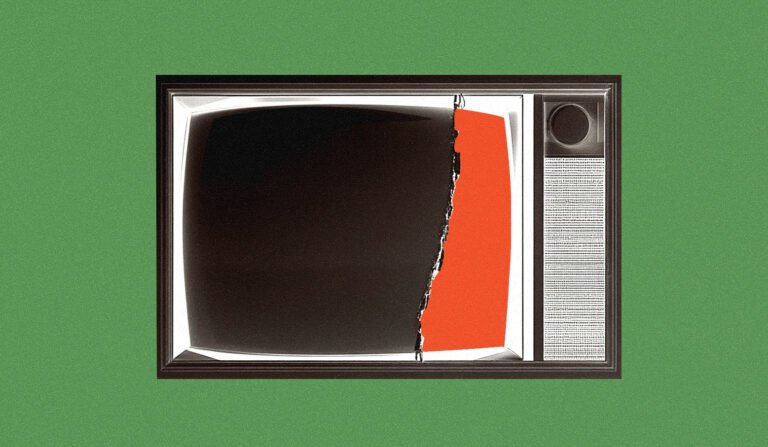Future of TV Briefing: Streaming advertising’s supply-demand imbalance
By Tim Peterson • October 29, 2025 •
Ivy Liu
This Future of TV Briefing covers the latest in streaming and TV for Digiday+ members and is distributed over email every Wednesday at 10 a.m. ET. More from the series →
This week’s Future of TV Briefing looks at a spate of recent studies that illustrate the out-of-whack supply-demand dynamics in the streaming ad market.
- In Graphic Detail
- WBD’s other suitor, Paramount’s WBD plans and more
In Graphic Detail
The streaming ad market’s economics are out of whack.
More people are watching ad-supported streaming services, which is helping to drive down streaming ad prices. But a lot of streaming ad inventory is going unsold. Thus streaming’s supply-demand imbalance, as the following charts illustrate.
The average person is using almost 11 streaming services, with roughly 4 being free streamers, according to TiVo’s Q2 2025 Video Trends Report for North America.
Among subscription-based streamers, a significant share of streaming viewership is on services’ ad-supported tiers, which means more impressions are available to advertisers, per TiVo’s report.
Usually an increase in ad impressions corresponds with a decrease in ad prices, as has been the case on YouTube, according to Tinuiti’s Q3 2025 Digital Ads Benchmark Report.
Streaming ad prices are dropping but still relatively pricey for the premium ad-supported streamers, per Tinuiti.
Meanwhile free, ad-supported streaming TV services – among streaming’s cheapest inventory sources – are filling less of their available ad inventory, exemplifying the supply-demand imbalance, according to Wurl’s CTV Trends Report 2025.
What’s wild about streaming’s supply-demand imbalance is that the traditional TV ad market is seeing the opposite play out, with household reach and ad airings down but advertiser spending up, according to iSpot.tv’s Q3 2025 Unified TV Advertising Report.
What we’ve heard
“It seems like you have to be a little bit more online or up to date with how fast culture moves just to determine, yes, this is a ‘safe brand’ — a brand that I’m willing to work with vs. a brand that’s [in] a little bit of hot water right now.”
— Actor and creator Kalen Allen on the latest Digiday Podcast episode
Numbers to know
-6%: TelevisaUnivision’s year-over-year percentage decline in advertising revenue in the third quarter of 2025.
2.7 million: Number of daily active users for Meta’s Meta AI app, which houses its AI-generated video feed Vibes.
54%: Percentage increase year over year in the number of sponsored YouTube videos that were uploaded in the first half of 2025.
-85%: Percentage decline in The Washington Post’s YouTube views since its main talent Dave Jorgenson left the news outlet to start his own organization.
What we’ve covered
How Kalen Allen navigates brand safety and cultural polarization in the creator economy:
- The actor and creator received backlash for doing a brand deal with Starbucks in 2024 amid boycotts related to the brand’s employee unionization.
- Just as brands vet creators, creators must vet brands to ensure collaborations suit the creators’ own brands.
Listen to the latest Digiday Podcast episode here.
Some creators say brands are delaying their holiday deals later than ever this year:
- Two creators said that brands are striking holiday deals within 30 days of launch as opposed to the more traditional 30 to 60 days out.
- That mirrors a shift publishers had seen post-pandemic in advertisers skewing toward shorter turnaround times.
Read more about brands’ creator holiday deals here.
Marketers confront a new kind of brand safety problem in AI video:
- Video vendors are seeing an opportunity to expand their brand safety and suitability capabilities to AI-generated videos.
- The potential for misinformation and copyright infringement in AI-generated videos is what could be a cause for concern among brands.
Read more about AI brand safety concerns here.
What we’re reading
Amazon, Apple and Netflix are among the companies kicking the tires on an acquisition of Warner Bros. Discovery, which has already turned down three acquisition offers from Paramount Skydance, according to Bloomberg.
Paramount Skydance would look to combine HBO Max and Paramount+ but otherwise retain Warner Bros. Discovery’s properties, like its film-and-TV studio, if it succeeds in acquiring HBO’s parent company, according to Bloomberg.
Don’t expect to see new seasons “Yellowstone” on the combined HBO Max-Paramount+ as the show’s creator Taylor Sheridan has opted to leave Paramount to make shows and movies for NBCUniversal, according to Puck.
Comcast’s programmatic TV ads:
Comcast had opened up its share of inventory on its pay-TV service for programmatic purchase in 2023, but now it’s expanding the inventory pool to its entire linear ad load, according to AdExchanger.

